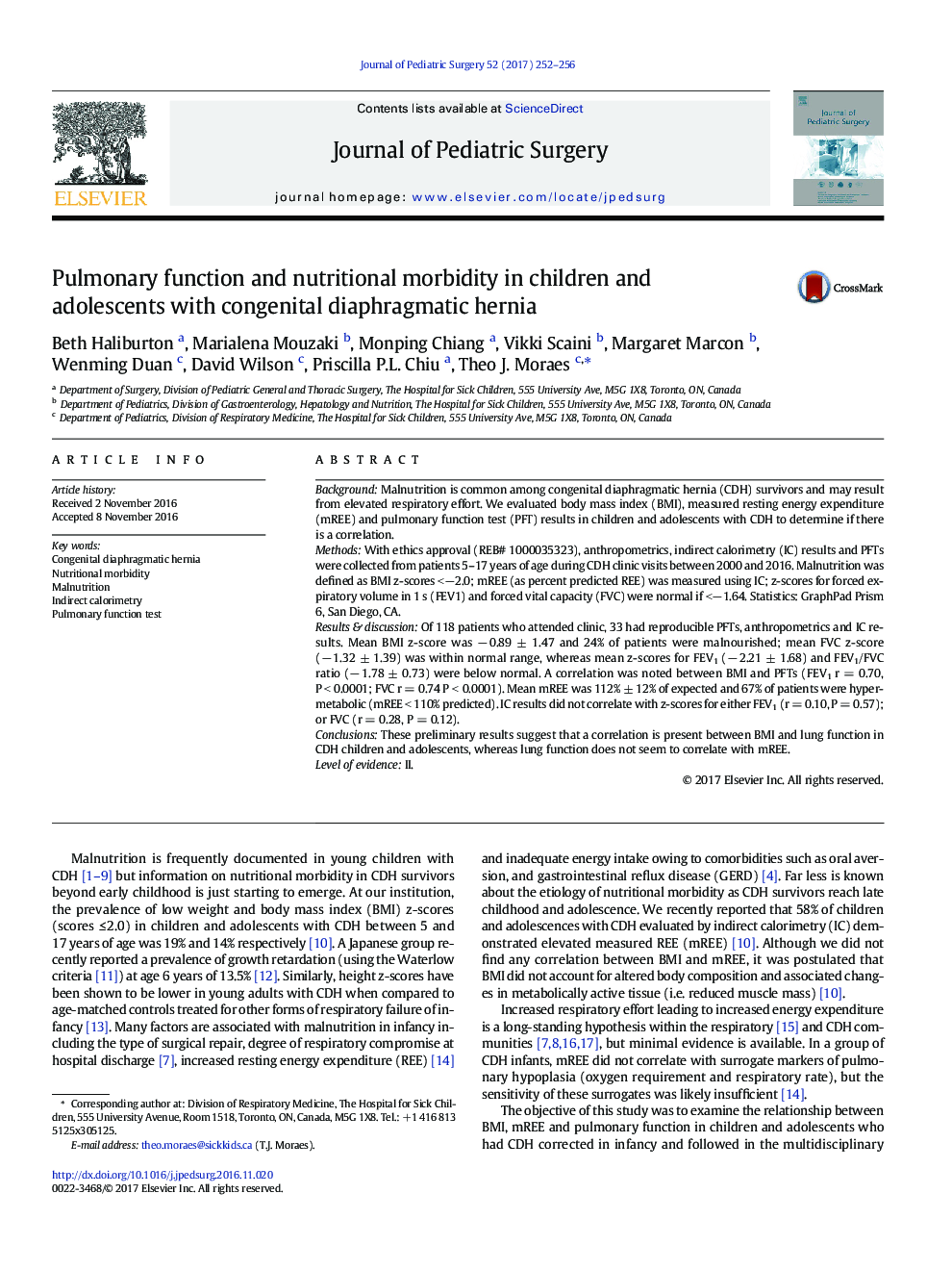| Article ID | Journal | Published Year | Pages | File Type |
|---|---|---|---|---|
| 5718409 | Journal of Pediatric Surgery | 2017 | 5 Pages |
BackgroundMalnutrition is common among congenital diaphragmatic hernia (CDH) survivors and may result from elevated respiratory effort. We evaluated body mass index (BMI), measured resting energy expenditure (mREE) and pulmonary function test (PFT) results in children and adolescents with CDH to determine if there is a correlation.MethodsWith ethics approval (REB# 1000035323), anthropometrics, indirect calorimetry (IC) results and PFTs were collected from patients 5-17 years of age during CDH clinic visits between 2000 and 2016. Malnutrition was defined as BMI z-scores <â2.0; mREE (as percent predicted REE) was measured using IC; z-scores for forced expiratory volume in 1 s (FEV1) and forced vital capacity (FVC) were normal if <â1.64. Statistics: GraphPad Prism 6, San Diego, CA.Results & discussionOf 118 patients who attended clinic, 33 had reproducible PFTs, anthropometrics and IC results. Mean BMI z-score was â 0.89 ± 1.47 and 24% of patients were malnourished; mean FVC z-score (â 1.32 ± 1.39) was within normal range, whereas mean z-scores for FEV1 (â 2.21 ± 1.68) and FEV1/FVC ratio (â 1.78 ± 0.73) were below normal. A correlation was noted between BMI and PFTs (FEV1 r = 0.70, P < 0.0001; FVC r = 0.74 P < 0.0001). Mean mREE was 112% ± 12% of expected and 67% of patients were hypermetabolic (mREE < 110% predicted). IC results did not correlate with z-scores for either FEV1 (r = 0.10, P = 0.57); or FVC (r = 0.28, P = 0.12).ConclusionsThese preliminary results suggest that a correlation is present between BMI and lung function in CDH children and adolescents, whereas lung function does not seem to correlate with mREE.Level of evidenceII.
